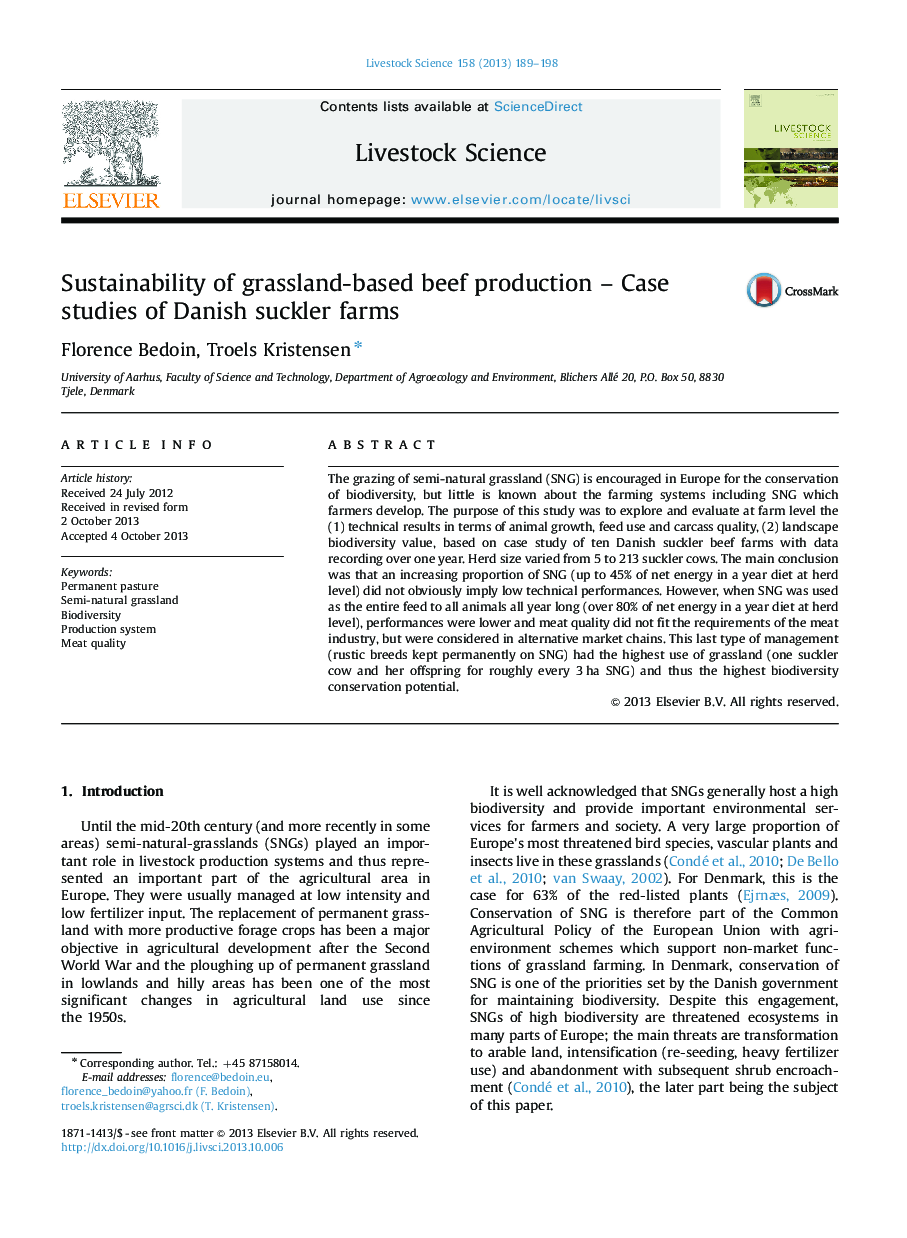| Article ID | Journal | Published Year | Pages | File Type |
|---|---|---|---|---|
| 5790307 | Livestock Science | 2013 | 10 Pages |
Abstract
The grazing of semi-natural grassland (SNG) is encouraged in Europe for the conservation of biodiversity, but little is known about the farming systems including SNG which farmers develop. The purpose of this study was to explore and evaluate at farm level the (1) technical results in terms of animal growth, feed use and carcass quality, (2) landscape biodiversity value, based on case study of ten Danish suckler beef farms with data recording over one year. Herd size varied from 5 to 213 suckler cows. The main conclusion was that an increasing proportion of SNG (up to 45% of net energy in a year diet at herd level) did not obviously imply low technical performances. However, when SNG was used as the entire feed to all animals all year long (over 80% of net energy in a year diet at herd level), performances were lower and meat quality did not fit the requirements of the meat industry, but were considered in alternative market chains. This last type of management (rustic breeds kept permanently on SNG) had the highest use of grassland (one suckler cow and her offspring for roughly every 3Â ha SNG) and thus the highest biodiversity conservation potential.
Related Topics
Life Sciences
Agricultural and Biological Sciences
Animal Science and Zoology
Authors
Florence Bedoin, Troels Kristensen,
